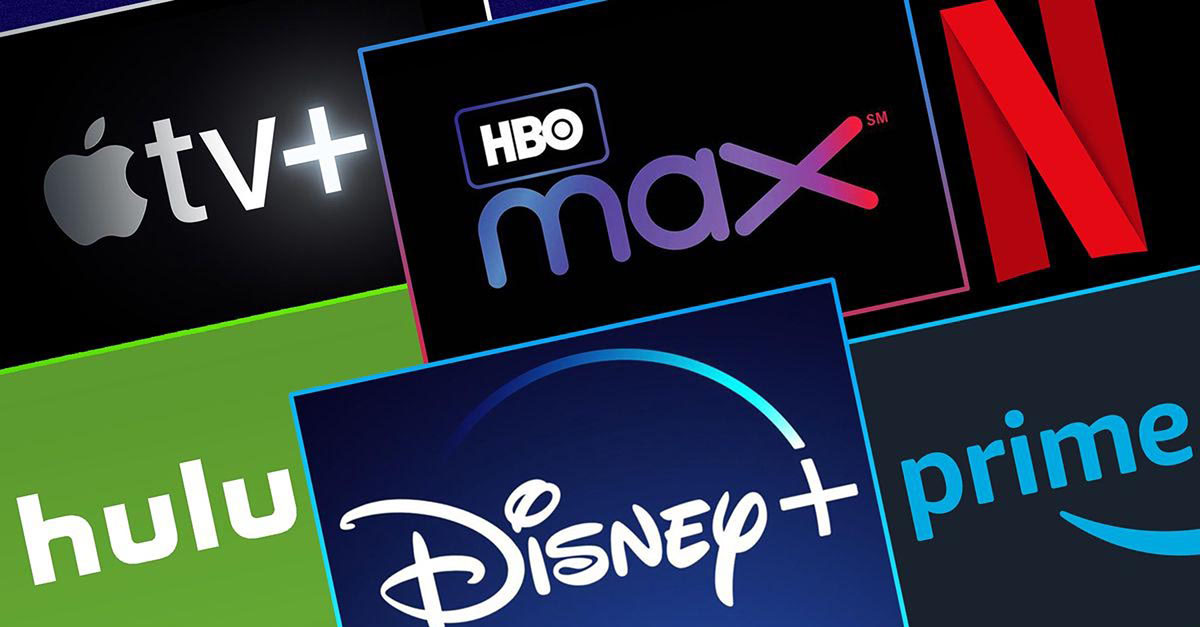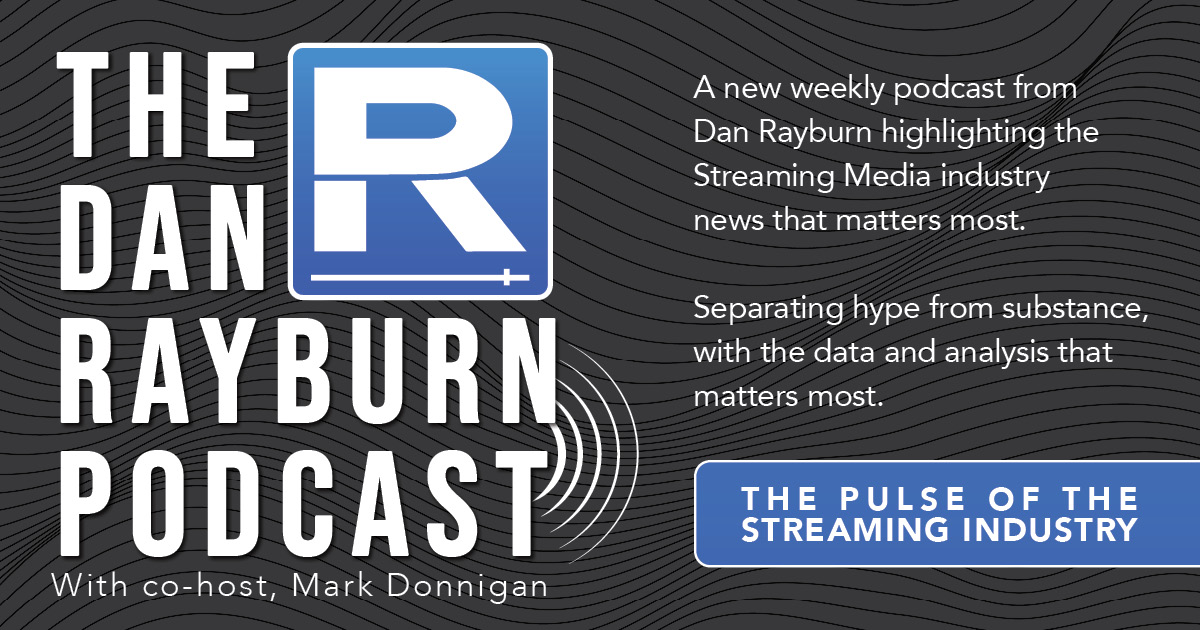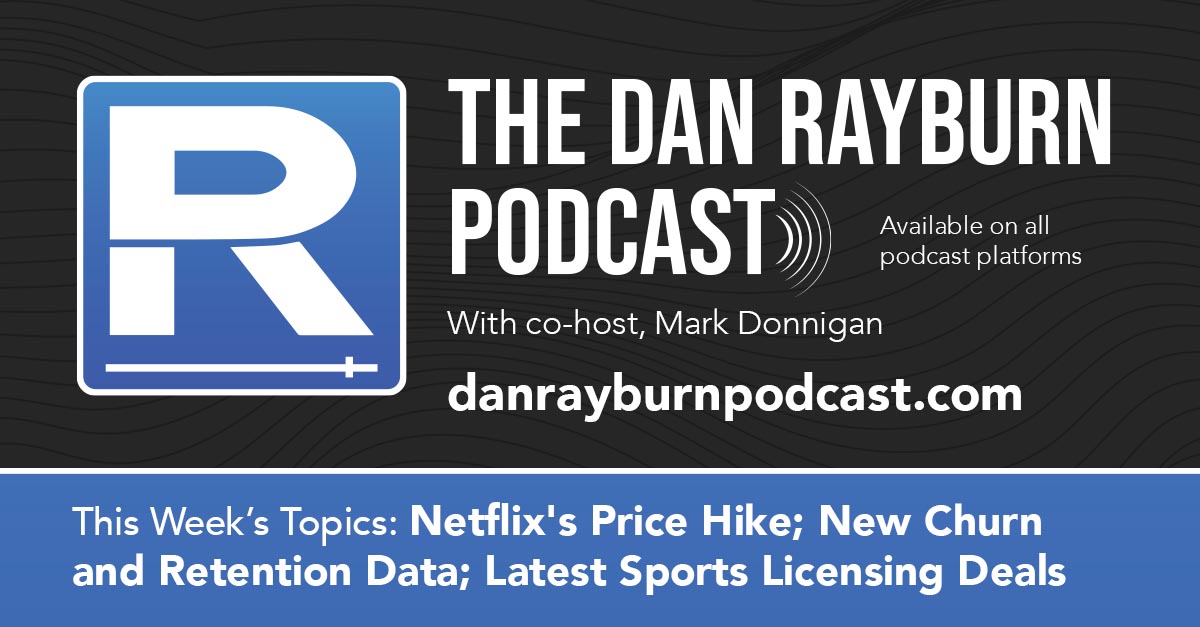 Across the streaming media industry, we read and talk a lot about the video stack including encoding, metadata, APIs, delivery, playback, and QoE. While all of these are important elements in building out video services at scale, the end result of these technical elements must come down to one simple business outcome – to reduce churn and increase retention. Nothing is more important than having the right content strategy and proper data collection methodology to know why subscribers sign up and more importantly, what streaming services can do to keep users on their platform.
Across the streaming media industry, we read and talk a lot about the video stack including encoding, metadata, APIs, delivery, playback, and QoE. While all of these are important elements in building out video services at scale, the end result of these technical elements must come down to one simple business outcome – to reduce churn and increase retention. Nothing is more important than having the right content strategy and proper data collection methodology to know why subscribers sign up and more importantly, what streaming services can do to keep users on their platform.
With so many video services in the market to choose from and most services offering only month-to-month billing, with no cancellation fees, it’s easy for consumers to jump amongst services. This is one of the main reasons why almost no OTT service, even those that are public companies, break out any churn numbers in their earnings reports. Some streaming services don’t even disclose how many of their users are paying subscribers versus customers on a free trial. To help answer a lot of these unknown questions around churn and retention of OTT services, I held conversations with and collected data from just over 100 streaming media services globally.
Through a new consulting relationship with Salesforce, I also spent a lot of time talking to and looking at some of the data (anonymized) from Salesforce’s Subscription Lifecycle Management platform, built specifically for publishers, broadcasters and OTT service providers. The results of the findings, which I plan to release shortly for free to the industry, are pretty interesting and include real numbers directly from OTT companies. While I’ve seen other reports released with estimates on churn and retention percentages across the streaming OTT industry, I can tell you from speaking to a lot of publishers directly, including some of the largest OTT platforms in the world, that the numbers released to date are not even close to being accurate.
One of the main reasons for the inaccurate churn data we see being released by third-parties is because it’s based off the wrong metrics, like tracking app downloads that can’t tell a new user, a current paying user, or a former user returning. Another problem is that many don’t define “churn” using an agreed upon definition. For instance, some third-party companies define churn as a user whose account was put on hold due to an expired credit card, while others don’t include them in their numbers at all, since I’m told by streaming services that most update their credit card and stay on the platform. There is no industry standard for reporting churn methodology across services which makes comparing these numbers from one service to another difficult, especially when it comes to how some video services are bundled with other telecom or mobile services.
A few years back, Hulu stopped reporting the number of subscribers they had to Hulu + Live TV because the company said users were turning the service on and off so many times throughout the year that the numbers given out each quarter wouldn’t give an accurate representation of the business. Since Disney acquired the majority stake in Hulu, Disney does break out the total number of subscribers each quarter, but not with any churn or retention data included. Some OTT services break out the number of hours per month each user streams video, while others don’t share numbers at all. So even trying to measure and compare something like “engagement” as a metric, across all platforms, is very difficult.
There are three main reasons why streaming services don’t share their churn and retention numbers publicly. The primary reason is that OTT services view their churn and retention data as competitive intelligence about their business that they don’t want others services to know. A second reason is that some streaming services don’t know the proper methodology to define churn and can’t compare their formula to any industry standard. If a user cancels a service, but comes back three months later, how do you define that behavior? One user, churned twice, but it’s the same account. Some services count churn based on the month, quarter or calendar year, while others only count churn based on the lifetime value of a customer, over a set period of time that they define.
The last reason why services don’t share any churn data is that many of them struggle to measure where the churn took place across their platform and for some, they can’t even detect the root cause of churn. Did a user do ten searches in a row for content they couldn’t find and then cancel? Or did they try and play a few different videos that had playback issues and cancel as a result of a technical problem? I won’t mention services by name, but many I have spoken to privately discuss how little they know about the reasons why consumers churn off their platforms.
Within the streaming media industry many argue about poor video quality startup times as the main reason users churn, when in fact, based on the data I collected, poor video quality isn’t even in the top three results. Of the 101 OTT services I surveyed, lack of content choices, poor customer service and pricing, bundling and yearly service discounts were the top three responses. And of those I surveyed, 58.5% of them said the tool(s) they use provide “limited” or “no” insight into the main reasons for churn, let alone where the consumer churns out of the platform.
The top result of churn wasn’t platform support, startup times, or 4k options. It all came down to content, discovery and poor customer service as the top three responses by streaming services. The content windowing strategy of each platform and how their content is released, the schedule, ability to binge watch etc. were all talked about by the platforms as the biggest driver. This is why companies are spending so much money on content and continue to spend more each year. No one should be surprised by this since we know that content is king and is the number one driver of new subscriber sign ups and with the right content, keeps user from canceling. But going forward, simply adding new content won’t be a fix by itself. That tactic will need to be used in combination with a host of other improvements that streaming services need to make.
Another problem is that too many vendors are trying to sell churn and retention platforms to OTT providers by looking at churn across only a few data points like QoS, personalization or recommendation engines. But it’s not about one or two data points. It’s about having a complete subscriber lifecycle management platform that properly measures not only the reason for churn but also user’s engagement. They have to go hand-in-hand, like what Salesforce offers with not only managing subscribers but also looking at how engaged they are. And finally, to be successful, these platforms have to be proactive, not reactive. Far too many vendor solutions I have looked at don’t allow customers to make accurate behavior predictions, so they can reduce churn before it happens. Personalization is NOT a churn and retention tool.
I’ll be releasing all the results from my conversations and survey about streaming video churn and retention shortly, (anonymized) and it can be used anyone as they like. It was not sponsored by any vendor or company, but rather a project I undertook to give the industry some real data since most of the info given out on churn is not accurate. I hope the data sparks a bigger public conversation within the industry and it’s a topic I’ll be covering a lot on my new podcast and at the NAB Show Streaming Summit.





 Across the streaming media industry, we read and talk a lot about the video stack including encoding, metadata, APIs, delivery, playback, and QoE. While all of these are important elements in building out video services at scale, the end result of these technical elements must come down to one simple business outcome – to reduce churn and increase retention. Nothing is more important than having the right content strategy and proper data collection methodology to know why subscribers sign up and more importantly, what streaming services can do to keep users on their platform.
Across the streaming media industry, we read and talk a lot about the video stack including encoding, metadata, APIs, delivery, playback, and QoE. While all of these are important elements in building out video services at scale, the end result of these technical elements must come down to one simple business outcome – to reduce churn and increase retention. Nothing is more important than having the right content strategy and proper data collection methodology to know why subscribers sign up and more importantly, what streaming services can do to keep users on their platform.